How to think about the Substack network
Cartography of Networks: Edition 3.5ish
Welcome to
. This is a bonus post of sorts that almost fits within our ongoing Cartography of Networks series, but not really. As it’s very much geared towards other Substack writers, rather than regular readers, I’m not sending this one out via email, it’s just here on the web. For the full map of posts, see here.Over a long enough time horizon, all Substack writers will write about writing on Substack eventually.
— Unknown (c. 6th century BC)
I’m currently in the midst of researching and writing a many-month-long series about networks here on
, and so it occurred to me this might be the perfect time to write a post I’ve been putting off for a while.Perhaps surprisingly for my publication’s modest size, I often get asked in DMs or over private emails about how best to build a following on Substack. In response, I’ve found myself writing and rewriting the same bullet point answers about leaning into the Substack network over and over again, so it felt logical that I should one day just put all this advice into a post that I can then link to. As I’m knee-deep in networks right now, the time felt right.
Ironically (and hypocritically), this ouroborotic writing about Substack on Substack is exactly one of the things I would generally advise not to do, but here I am breaking my own rule. I hope this shall be my one and done on the subject.
The post will cover the following:
Bit of background
Substack Network in terms of Network Science
Recommendations and Referrals
Guest posting
Notes (in my view, the most important bit)
N.B. I’m taking as a given the two prerequisites to growing a following on the internet: (1) quality, and (2) consistency. If you’re posting great work on a regular basis, then hopefully this post will be of some use to you. If not, then I’d focus on achieving those two things first.
Background
I began writing
in the summer of 2022. At that time I had no social media at all and zero published work anywhere, so I began this newsletter with zero subs and no clue where to find any. It took me five months to get to 100 subscribers, which was a combination of friends/family and a platform called The Sample. It took another month to get to 200, and two more after that to touch 400. Then Substack Notes launched and things really took off.Over the six months prior I had experimented pretty hard with posting on Twitter, which — despite managing to claw together 1000 followers1 — had only garnered Cosmographia 21 new subs in that entire period. In contrast, posting on Notes resulted in a massive uptick in new readers within just a few weeks. I crossed 1000 subs by the time of Cosmographia’s first year anniversary, and, as of the time of writing, I’ve just gone past 5000, two years in. In 2023, I launched a second newsletter called
, which after a year is just coming up on 3000 subs.I mention all this not to brag (after all, there are many far bigger who grew much faster), but to properly illustrate the power of the thing I’m going to spend the rest of this post talking about: the Substack network. I credit almost all of the growth in this period to my leaning into the network.

A bit of Network Science
There are many good posts — even entire Substacks — devoted to how to succeed on the platform, but I have yet to see anyone refer to network science in their explanation. I think this misses a trick as it’s an incredibly helpful lens through which to look at the tools that the platform provides its writers. So let’s do just that.
To understand the Substack network, we need to introduce some terms:
Node — a point in a network
Edge — a link between two points
Centrality — a measure of how important a node is within a network
Cluster — a sub-group of interconnected nodes within a larger network
Within the Substack network, every reader and writer is a node. A subscription is an edge — it connects a reader to a writer (and vice versa).
A really big Substack will have high centrality within the network — it has a lot of connections to a lot of other nodes, both readers and writers. For example, when I go into my Substack statistics I see this:
Apparently, I have a large audience overlap with these newsletters, even though they write about very different things to me. This is to be expected — they are among the biggest substacks on the platform. This indicates their high centrality; a lot of my readers also read them. I imagine it’ll be very similar story for your audience overlap too. Because of their high number of connections, a recommendation or a share from a high centrality node will be worth a lot more than one with less centrality (more on this below).
Meanwhile, within the Substack network there are what we call clusters, perhaps oriented around a genre of writing — like travel or food — or around a shared philosophical temperament, like the members of the
Social Club. Since my earliest days on here I’ve connected, and even collaborated with, other travel writers like , , and . Our interconnectedness to one another indicates a cluster within the wider Substack network. Identifying and collaborating with a cluster is a great way to boost your work on the platform (more on this below).Now we have our network science terms in hand, let’s use them to understand how to take advantage of each of Substack’s most powerful growth tools.
Recommendations and Referrals
We can think of Recommendations on Substack as enabling us to take advantage of other writers’ networks, while Referrals allow us to take advantage of a reader’s network.
Recommendations
When a Substack, say
, recommends , its author, , is essentially saying to all his readers that he thinks my work is good, and allows for a one-click subscription (i.e. a new edge) to connect his readers to my Substack. This, in short, is awesome. It means not all the burden for growth is on me; when George’s newsletter grows so does mine, and, as I recommend Art Every Day back (you should subscribe, it’s excellent), when I grow so does he.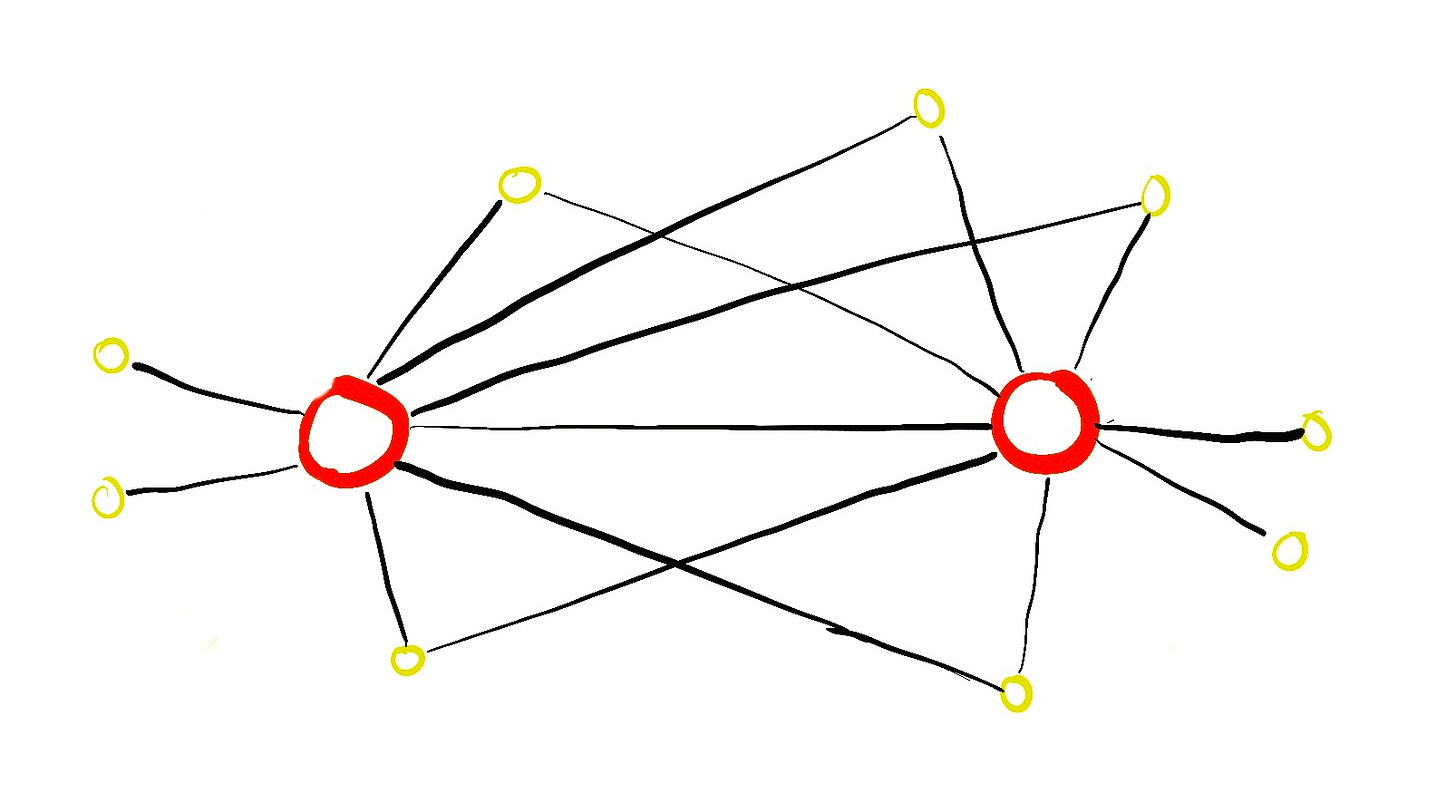
How does one go about getting a Recommendation from another writer? Well, this is why quality and consistency are prerequisites — they’ll need to enjoy your work before recommending you. With that in mind, throw yourself into the Substack network: leave comments (thoughtful ones, not fluff or links to your own substack), share others’ work, engage on Notes (see below). Once you do that you’ll start to build out a mini-cluster of writers within the ecosystem, who’ll be much more likely to recommend you.
My advice to those just starting out on this is to engage other writers in your niche, whether that be travel, politics, sport, or whatever. Your aim is to form a supportive cluster within the larger network, encouraging and championing one another. Within that cluster, it pays to be a high centrality node — the writer who knows and engages with all the other writers in your niche. In this sense, you really get out of it what you put in.
Needless to say, recommendations from the really big substacks are the most valuable and therefore the most sought after. I would strongly advise against DMing a big publication that doesn’t know you to ask for a recommendation. Remember their readers trust them to send them good stuff so they’re not going to throw recommendations around willy-nilly for people they don’t know. You have to earn a writer’s trust before they’re going to be willing to do that favour for you. Cosmographia isn’t even that big and I get these DMs all the time; they’re very annoying and they don’t work. In a similar vein, just DMing a link to a post you wrote with no explanation at all is not a good growth tactic; if you’re not going to bother trying to convince the unsolicited recipient to read your work, why should they read it? Lastly, while I’m on the subject, the single most irritating thing any Substack writer can do to another is add them to their email list without their permission; the only outcome of this is that they will not only unsubscribe but probably make a mental note never to read your work in the future.
Getting back to the subject of Recommendations, I’ve found that the less substacks you recommend, the more subscribers actually take you up on your recommendation and subscribe to that substack. I assume this is because a new reader to a newsletter will be much more likely to accept recommendations if they’re only signing up for 2 or 3 more newsletters, rather than 20. As much as the temptation may be to recommend dozens and dozens of newsletters in the hope of receiving them in return, it may be more effective to pick and choose them carefully. Those that you have sent lots of subscribers to are probably more like to recommend you in return.
For more info on how Recommendations work, see here. For a more detailed breakdown on how best to think about getting Recommendations from other writers, see this excellent post from
.Referrals
Referrals are very similar to Recommendations, except that you are trying to leverage a reader’s network, rather than a writer’s. Substack have created an automatic reward system for readers who share your work. These rewards are generated when a reader’s share of their unique referral link results in a new subscriber for your newsletter. You can turn referrals on, and customise the rewards, on your settings page.
Unlike a writer, it is pretty much impossible to know how big a reader’s network is, so it is a good idea to remind your audience often about the Referrals perks, in the hope of finding those willing to champion your work regularly. I put my Referral link in the header to my newsletter emails, so it’s automatically included on every post I send.
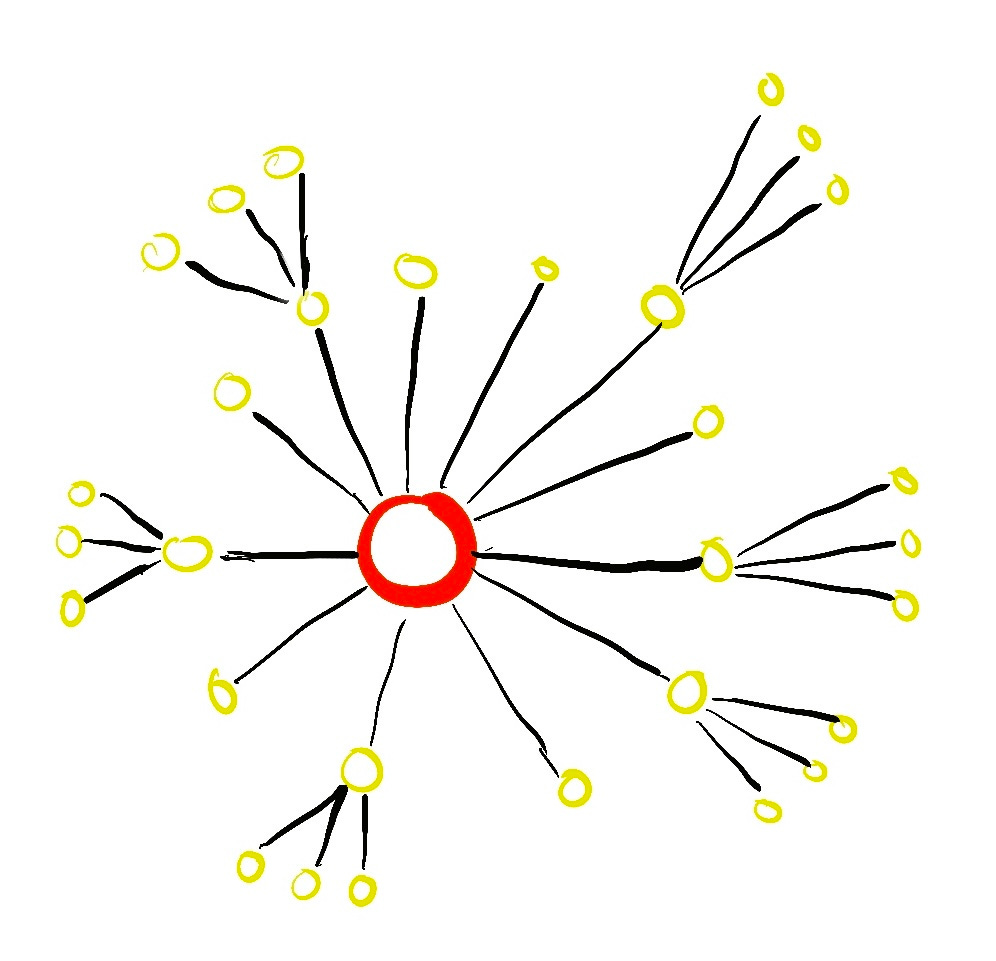
For more info on how Referrals work, see here.
Guest Posts
In my humble opinion, guest posts are the single most underutilised means of taking advantage of the Substack network.
When you post on your own newsletter, your work is going out to your network, and perhaps a few new readers who’ve spotted your work on Notes, other social media, or from a reader’s share. However, when you publish a guest post on another substack, your work is being seen by an entirely new network of readers who would not otherwise have connected with you. Needless to say, this opens up a whole new avenue for sub growth.
But the benefits of guest posts go both ways. For the host, they get to publish a piece on which they did not need to spend much time, perhaps allowing space for deeper work on a future post, or doing engagement with potential readers on Notes or elsewhere. Every new post on your substack has potential to reach new readers, and a guest post is no different, even though you didn’t write it yourself. Some of Cosmographia’s most successful pieces, both in terms of engagement and bringing in new subscribers, were guest posts written by other authors. In fact,
is a substack made up entirely of guest posts — every single essay on there has been written by a different substack writer.Guest posts can take the form of new essays, text interviews, reposts from the guest’s substack, a cross-publication write-and-respond, cross-posts etc. Just like with Recommendations, having built up your own cluster of other Substack writers will be key to unlocking guest post opportunities.
Notes
I’ve saved Notes for last because in my view it is the single most important part of the entire Substack network. Succeeding with Recommendations and Guest Posts is downstream of the work you do on Notes.
Substack is what is called a ‘walled garden’ platform. Unlike other social media (like Instagram or Twitter X) where everyone is chucked together into the same room, each publication exists in a separate space. If you hang around on
As I described above, the game-changing moment for Cosmographia came with the launch of Notes. I didn’t have any following to bring over to my newsletter, and I wasn’t having any luck with social media, so the launch of Notes gave me a place to consistently find new readers for the first time.
Over the last year and a bit of using the platform, I’ve seen quite a lot of people proclaiming that Notes is a waste of time. That there are only other writers on there, and so is not a useful means of bringing in new readers. My own experience has proved this to be complete nonsense. You can see from the big wheel above that far more than half of all my subscribers have come from posting on Notes on a daily basis. The same is true of those very kind folks who have paid subscriptions. The other big chunk came via Recommendations, and where did I find those writers to recommend me? Notes.
Now, at the beginning I’d grant some truth to the claim that Notes users were overwhelming writers, but even when that was true (it’s not anymore; an ever-increasing amount of my new subs via the app don’t have a substack of their own) it remained an incredible opportunity for writers. Gaining readers via another social media platform, say Twitter X, means clawing them in one at a time. But on Notes, you’re surrounded by other people who have their own networks of readers — networks that via recommendations and guest posts you might be able to reach.
If I post a Note and a writer, let’s say the lovely
of fame, finds it incredibly witty and hilarious (unlikely, but possible), and decides to subscribe to my Substack off the back of it, I’m not only gaining one new reader in Mike, but potentially a whole raft of new readers via his own following, should we one day collaborate, or if he restacks my work. This is, once again, awesome, yet it feels so many people miss this simple fact about Notes.Across my two publications there are 292 publications recommending my work, which has resulted in ~3000 new subs. These writers found me via Notes.

Hopefully, I have now convinced you of the value of using Substack Notes, so I will now share what I’ve found are some best practices.
Notes best practices:
Post things related to your Substack topic. Not a hard and fast rule, but perhaps at least 60% of the time try to stay on topic of what your substack is about. If you write about food, post notes about food. If you write fiction, post little fictional vignettes. Remember, the primary purpose of using Notes is bring people to your substack, but if you’re always posting notes about other topics, how will your people find you?
Be weird. Some of the stupidest stuff I’ve posted on Notes has done the best. I once drew a childish map of social media while procrastinating at work, posted it on Notes, and it got included in an official Substack newsletter. Throw lots of stuff at the wall and see what sticks.
In a post where I’ve exclusively written about Substack myself, I’m now going to tell you with a straight face: do not talk about Substack or Notes or the craft of writing on Notes too much, unless this is what your substack is about. Think about it from the point of view of potential new readers, why would they click through on an ouroborotic note about Substack to see what your newsletter is about? It’s like running a stall in a food market, and instead of selling me on your food, you keep talking about the roof.
Pictures often do better than text-only notes. I assume this is because it takes up more space and because even substack readers can be slightly lazy sometimes and it’s easier to process an image than a big block of text. That said, big blocks of text can also do really well, so don’t only do one or the other.
Restacks tend to perform worse than normal notes. I assume this is because the Substack team want to avoid the dunking culture of
TwitterX, but useful to bear in mind.Posting regularly means your notes will do better. I tend to try to post 2-3 times a day, and when I do that they generally seem to do well. If I miss a few days in a row, the first few back do worse than before. I assume this is because the algorithm is trying to reward power users.
Conversely, if you post lots of notes back to back too quickly, they also seem to do worse than if you space them out by a few hours or so.
Notes at the weekend also tend to do worse — I assume this is because we are all procrastinating at work. At weekends, we clearly have better things to do!
When sharing your own work on Notes, try to give a bit of sizzle to draw readers into your post. If you say “here is a thing I wrote,” you’re probably not going to get much take up, but if you lead me in with a spicy intro I’m much more likely to click through. I often just copy and paste the intro I wrote in the post itself into my restack. Seems to work pretty well.
Get in the comments of other people’s notes. Best way to engage and start building out a cluster of writer peers is via conversations on Notes. If you only ever post your own notes and never engage with others, you’ll likely not see any traction. Similarly, if all you do is share your own work, you’re probably not going to get much response.
Be generous in sharing other people’s work on Notes. If you read something that you think is a total banger, share it and tell people why. A restack without a note will do less well, so add in a comment too. This is another great way to build relationships with other writers.
There are a handful of readers who will leave a thoughtful comment/restack on almost every post I publish. I love these people. I often begin reading and sharing their substack (if they have one) on a regular basis because they had been so supportive of mine. Be that reader for the writers you like and you’ll build up your own little cluster in no time.
Have fun with it. Experiment. Mess around. Don’t take it too seriously. Literally no one knows which note or post will end up doing well, so just play around and enjoy the process. After all, why else are we doing it?
Other things to note:
For those just starting out, you probably will see little-to-no engagement on your notes at first; this is fine and totally normal. Notes are shown to your readers first and foremost, so if you don’t have many yet then not a huge number of people will actually be seeing them. Notes are also shown to people who have previously engaged with you on Notes, so if you haven’t had much engagement yet, again, your note probably isn’t being shown to lots of people. The first few weeks of posting every day on Notes I didn’t get much back at all, but after plugging away for a little while that changed. Get in the comments of other writers, restack notes and posts, join the conversation and you’ll start seeing results.
Followers. Substack recently launched a new feature which allows readers to ‘follow’ a writer on Notes. A lot of writers have complained about this, saying they feel this is taking away potential new subscribers to their substack, and they’re being left with ‘useless’ followers instead. However, I think they’re missing a trick on the network aspect of this feature. Subscribing to a newsletter is a bit of a commitment, so there have been plenty of times when I’ve seen something I like on Notes, or in a full post, but I’m not sure I’m ready to commit to a new newsletter yet (I already can’t read all of the one’s I’m subscribed to). So instead, I ‘follow’ the writer to keep tabs on them, rather than just walking away. This massively expands the potential reach of our network. Think of it like a funnel: follower → free sub → paid sub. Followers are good, because now they’re in your network.
Mini rant: Sometimes I see people saying that Substack has a discoverability problem; Substack does not have a discoverability problem! Substack has literally built some of the best discoverability tools for a blog in the history of the web! The single best marketing tool of the last 20 years has been social media. Substack literally built an entire in-house social media platform (Notes) which allows one-click subscribes to your writing! It has built an automated incentive system to encourage readers to share your work! It has created an automated recommendation system where other writers can share their new subscribers with you! It has literally never been easier to find readers for your writing! Back in the old days you had to build out your own blog website (and possibly pay to do so), then get on old school forums or chatrooms or social media and relentlessly post stuff in the hopes that people click on an external link and then hopefully click through your blog and read some posts. Then they have to remember to come back and read future work! And there was no monetisation system! I’m not a company shill, Substack isn’t perfect, but like, come on! They allow us to create and host a blog/newsletter (for free), they’ve built all these growth tools (for free), there are no ads, monetising your writing is as easy as toggling a button in settings, you own your email list, they’ve built an entire social media network for us, and people get mad because, what, they ship an extra feature that you don’t intend to use? Or because they feature the most successful writers on their official blog about growing a newsletter? Who else are they suppose to feature?! They have Substack Reads to give shout-outs to newsletters big and small, but it seems fair enough to me to ask the biggest newsletters how they got so big (even if not all their advice is relevant to everyone). What I’m trying to say is Substack has built a lot of useful discoverability tools, but it’s still up to us to take advantage of them.
Sometimes I see people say that the only writers who succeed on Substack are those who already had a following prior to coming to the platform; this is not true either.
I suspect some of the frustration I sometimes see on the platform is caused by unrealistic time horizons. It’s very unlikely anyone starting from zero will make a full-time income on Substack in one to two years. I have no idea what a realistic time horizon looks like, but I think it’s closer to 5-10. Hence, it’s important to write about something you really, really love.
The more of us who start posting interesting stuff on Notes the better the platform will be, and the more readers will come hang out. If it’s just lots of writers talking about writing to one another, firstly there’s little to differentiate us from one another, and secondly it’s probably not an environment lots of readers are going to want to spend time in.
There are many ways to grow a newsletter; there is no one-size-fits-all strategy to follow. But leaning into the Substack network seems a good place to start.
To wrap up, here are a few examples of writers who I think are really good at using Notes, in case you need some inspiration. I hope this post was helpful in some small way.
Literally the day I crossed the 1000 followers on Twitter, Elon broke all links to Substack. Turned out to be quite the waste of time. I have since deleted my account.





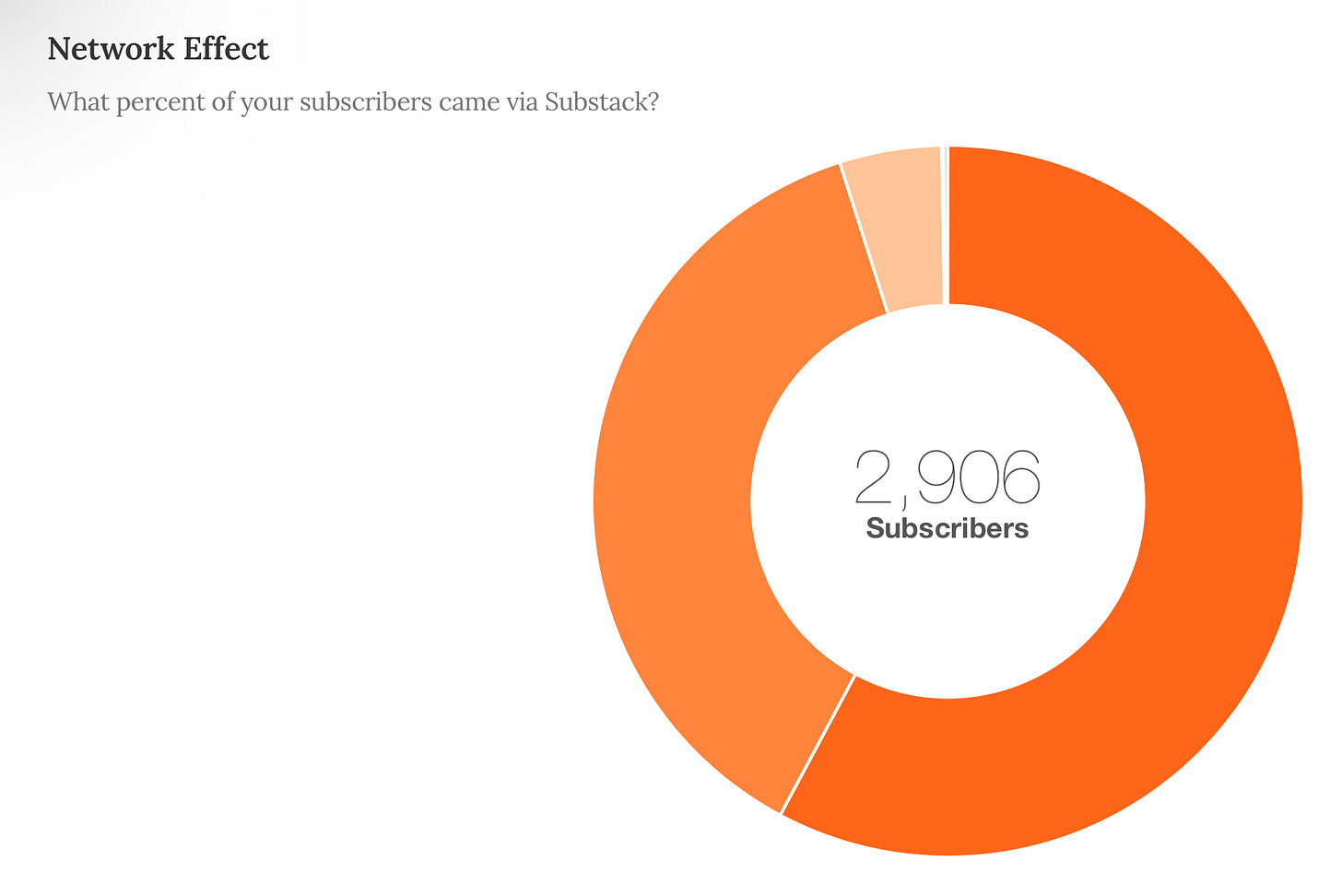



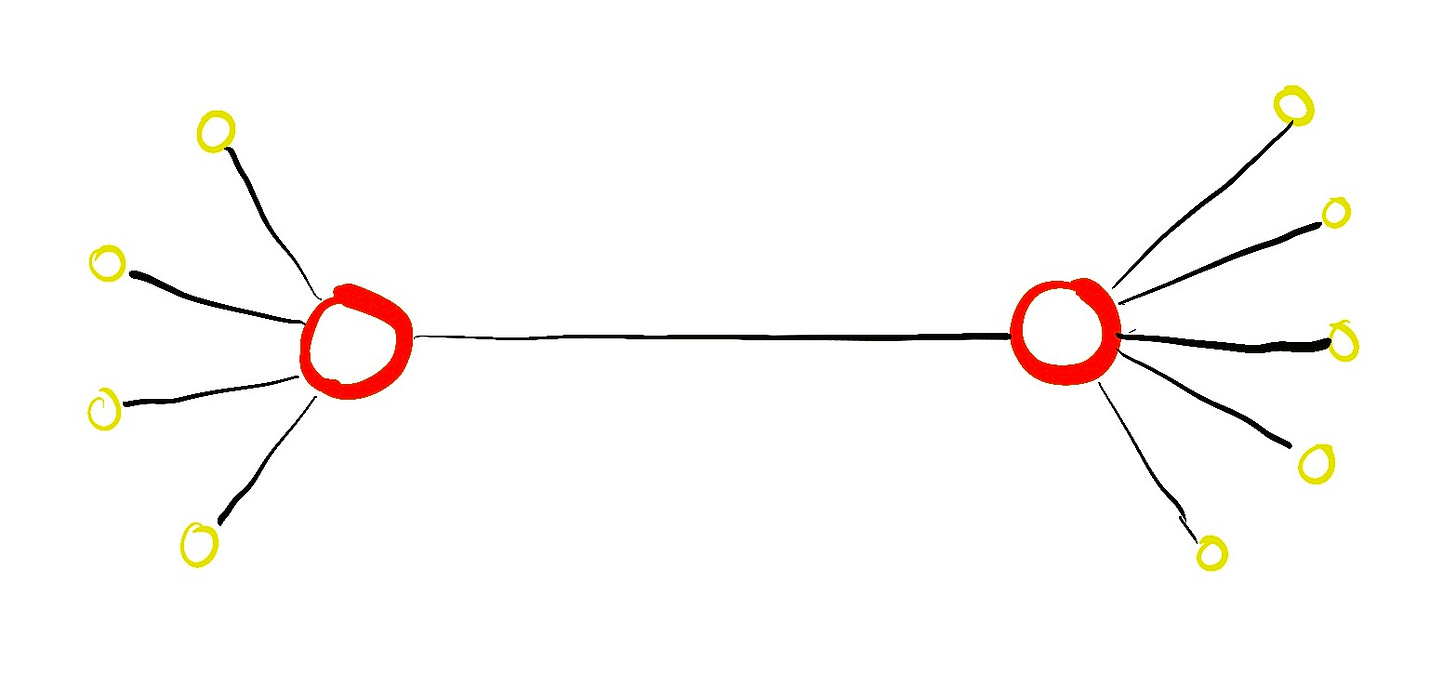

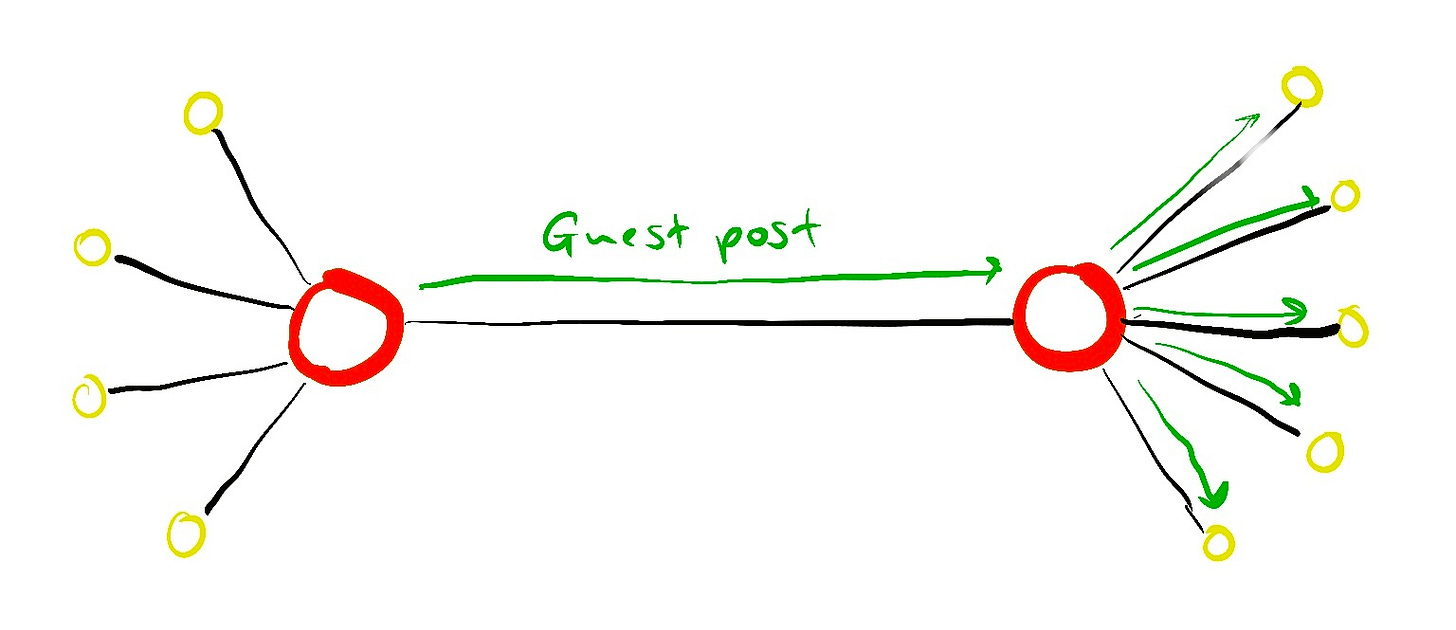



Three cheers for this and especially the props to the discoverability factor. It sometimes makes me wonder if folks had ever tried to rig up a full scale website, manage and tend to 2-4 external social media profiles, write distinctively for each of those PLUS write guest posts on other sites to extend their reach. This is literally what full scale marketing agencies do for clients — and Substack brought it all in-house … and did a helluva job.
Also, raising my hand as someone who had 12 readers and no social sites and made my way to bestseller. Maybe not as fast as others but the timing has been just right for me.
Thanks for the reminders about how to use this amazing network. Time to do a little refresh on my side …
Thanks for your generosity in sharing these insights, for laying them out so clearly and backing them up with evidence from your own experience. As I only started my Substack 3 months ago it’s good to know that the progress I’ve made is actually not too bad! I’m not a writer but a composer (who also writes a bit) so I feel I’m a bit of an outlier here, but that seems more like an opportunity than a hindrance. Time will tell.
Your Substack was one of the first I subscribed to and one of the reasons I knew I had discovered something extraordinary here that was worth investing my time and energy in.